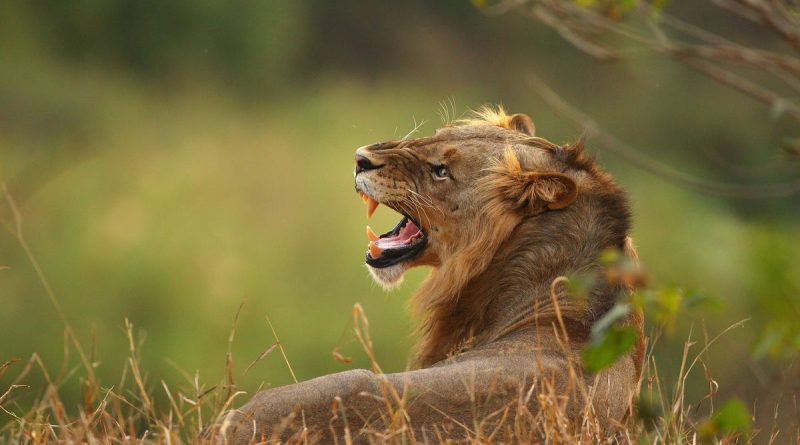Where lions, bears, wolves attack humans most often around the world
[ad_1]
A new survey using 70 years of data sheds light on where, when and why large carnivores kill humans and the profound influences these animals have on ecosystems amid further spread into undeveloped land.
Various studies have investigated large carnivore attack patterns, but no study has addressed the issue on a global scale and included all species of large terrestrial carnivores, according to the authors. The findings will help scientists to address the issue of improving co-existence and the long-term conservation of large predator populations.
The report, published Tuesday in PLOS Biology, found that the number of big carnivore attacks worldwide has increased over time — especially in lower-income countries, which the study characterized by low CO2 emissions and a high proportion of agricultural land.
This apparent increase, however, may also be a factor of increased incident reporting in the internet era compared with the study sample’s earlier years. Either way, scientists said they expect more conflicts to arise in the future.
Although the report doesn’t include every single attack incident, the results also show that humans in higher-income nations encounter predators very differently compared to lower-income ones.
Stolen monkeys: Suspect arrested in case involving animals taken from Dallas Zoo
Breakdown of 5,440 documented attacks worldwide (1950-2019) by 12 different species:
- Sloth bears: 1,337
- Tigers: 1,047
- Asiatic black bears: 765
- Brown bears: 664
- Wolves: 414
- American black bears: 403
- Lions: 282
- Leopards : 205
- Coyotes: 140
- Cougars: 135
- Jaguars: 25
- Polar bears: 23
Out of the 5,440 documented attacks, about one in three proved fatal, while the others resulted in human injuries.
Fatal attacks were also more common in the lower-income countries, primarily because they are home to tigers and lions, which engage in a larger share of such attacks. Encounters often occur while residents are engaged in daily livelihood activities like farming or herding.
- Big cats like tigers and lions launched the deadliest attacks, with 65% proving fatal.
- 49% of attacks involving canid species — which includes domestic dogs, wolves, coyotes, foxes, jackals and dingoes — proved fatal.
- 9% of bear attacks proved fatal.
What are the different types of attacks?
Attack scenarios vary greatly within and among species, as well as in different areas of the world.
Canids and big cats sometimes stalk humans and attack them for food — whereas bears were more often to attack when disturbed while feeding— or a mother who is protecting her cubs.
Predatory attacks, in which a carnivore tries to kill for food, represents the most dangerous type of large carnivore attack: In nearly half of the fatal animal-attack cases in which the scenario was known, the case was classified as predatory or unprovoked.
- Predatory attacks were most heavily concentrated in India, home to 72% of such incidents. These high numbers can be largely attributed to the nation’s population of tigers, lions, leopards and wolves. Another 14% of those attacks occurred in Africa.
- Unprovoked (but not predatory) attacks, although deliberate, often occur when the person involved is resting or sleeping and the animal attacks them with the presumed purpose of testing or investigating them as potential prey. These attacks mostly occurred in North America and Europe, where the animals involved were “highly food conditioned.”
- Adults are usually involved in unprovoked attacks and the animal usually flees after the person reacts.
What’s everyone talking about? Sign up for our daily newsletter to read the latest trending news.
Why attack circumstances vary by geography, nation’s development
Villages and farms in low-income nations, identified by the study for their lower emissions and bigger expanses of agricultural and rural land, are often found in carnivore country — which helps scientists explain why some 90% of dangerous encounters occurred during daily activities like farming, herding, traveling to school or collecting forest products.
The number of attacks in the last several years has actually decreased in countries with large forest coverage compared to numbers from the 1990s.
In higher-income nations, data shows that most attacks occur when humans participate in recreation activities like hiking or camping near carnivore areas.
However, research shows that some protected predator populations like brown bears, Eurasian lynx and gray wolves — found in one-third of mainland Europe — are also growing and expanding into urban and suburban areas.
Scientists are seeing conflicts rise in Europe and North America, which may also be especially severe since humans are less accustomed to co-existing with large predators, and therefore have less widespread knowledge of prevention and co-existence adaptations.
“Opportunist” animals like coyotes, bears and wolves are intelligent and can adapt to roam near populated human settlements in search of easy meals. Food or trash left outside the home, and humans who intentionally feed the predators, can lure these animals to the area.
Yearly dog, bee and snake killings more frequent than large carnivore attacks
Although increasing attacks by large carnivores can be reason to sound the alarm, co-author Vincenzo Penteriani, an ecologist at the National Museum of Natural Sciences in Spain, said humans should put these attacks into a broader perspective, the Smithsonian reported.
In the United States:
Also, deadly attacks by large predators usually receive more significant media coverage, which makes them seem far more common.
Snake hunters swarm to remove Pythons: Top photos of Florida’s annual ‘removal competition’
Camille Fine is a trending visual producer on USA TODAY’s NOW team.
